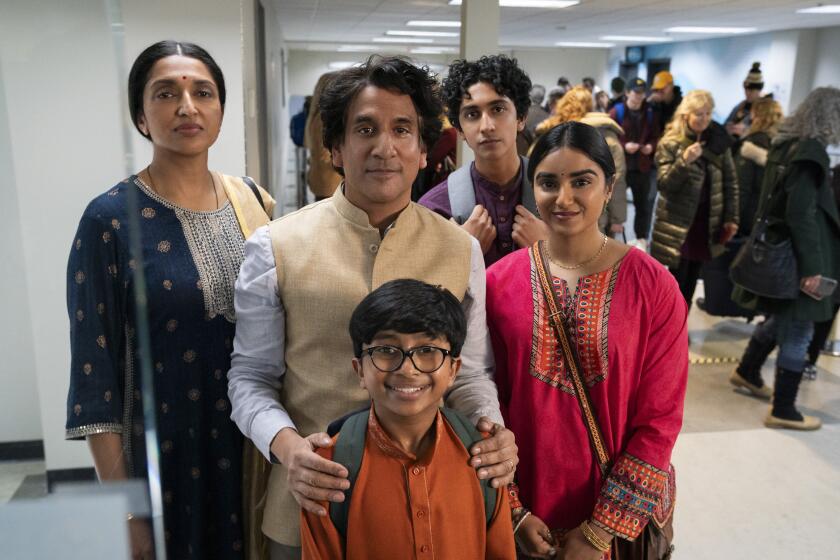TV REVIEWS : The UAW’s Bloody Struggle to Gain Power
Unions and their role in America’s economic, social and political life are rarely shown on television, but public television offers an exciting exception tonight with a well-done documentary on the bloody labor struggles that led to the creation of the United Auto Workers.
“Walter Reuther and the Rise of the Auto Workers Union,” part of the “The American Experience” series (at 9 p.m. on KCET-TV Channel 28, 8 p.m. on KPBS-TV Channel 15 and KVCR-TV Channel 24), recounts the formation of one of the country’s most influential unions, which moved millions of factory workers into the middle class. It is an important, gripping tale of life in the workplace 50 years ago.
Another union, the Machinists, has done a massive survey of television’s portrayal of organized labor and the average factory worker these days. The survey found, as viewers can see for themselves at any time, that unions and workers are generally ignored by the electronic media. Even prostitutes outnumbered machinists--union and non-union--on television by a 12-to-1 margin.
The survey also found that on the rare occasion when television does portray workers in unionized jobs, they are depicted as “clumsy, uneducated fools who drink, smoke and have no leadership abilities.” That isn’t true in “Walter Reuther and the Rise of the Auto Worker’s Union.”
Reuther, his brothers, Victor and Roy, and the workers are seen as courageous men and women who built the union by striking General Motors and Ford, which tried vainly to break the strikes with tanks, guns, tear gas and clubs used by police, the National Guard and brutal thugs hired by the companies to keep the corporations “union free.”
By the 1970s, the UAW had nearly 1.6 million members and a reputation for honesty and concern for society that was and still is unmatched by the corporations that employed them.
But now producers of the UAW story should update it. The documentary ends on a happy note as workers and their union seem to win the day. In fact, however, membership in the UAW has been cut almost in half, and unions represent only 16% of all workers--down from more than 35% in the 1950s.
What happened to decimate the UAW and the labor movement should be explained in a sequel showing that today’s corporate management rarely hire thugs to break unions. Instead, companies employ much more sophisticated tactics, using pricey lawyers who take advantage of pro-management laws interpreted by pro-management administrators of those laws.
That would be as fascinating as the fine history of the UAW we can see tonight.
The complete guide to home viewing
Get Screen Gab for everything about the TV shows and streaming movies everyone’s talking about.
You may occasionally receive promotional content from the Los Angeles Times.



